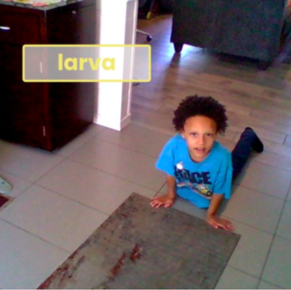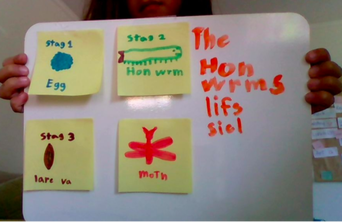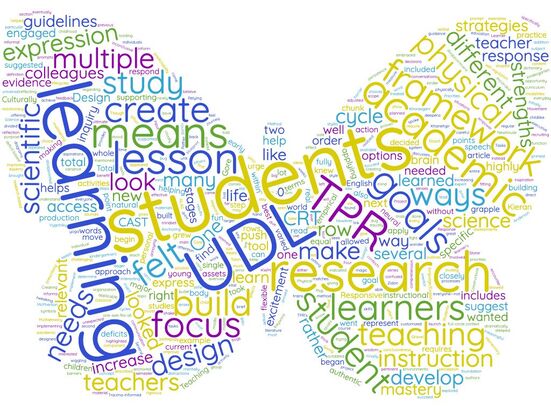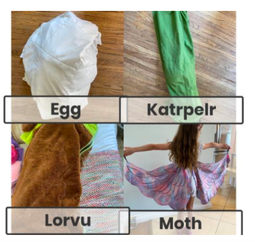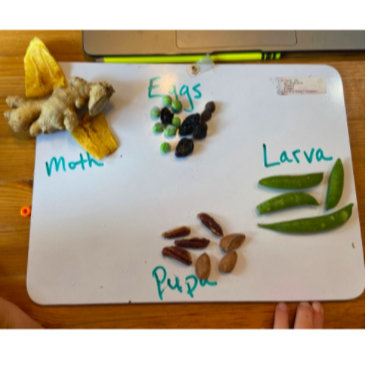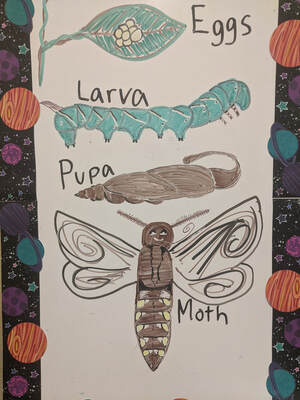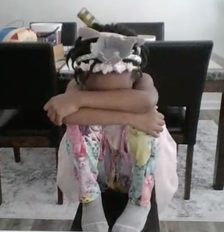Bodies movin'
UDL, Movement, and Academic Language in science instruction
Research Team
Becca Maldonado - Science teacher at High Tech Elementary Explorer; host teacher
Addy Rigdon - Kindergarten teacher at High Tech Elementary Explorer
Lilly Wageman - 1st through 3rd teacher at Community Montessori
Ratha Kelly - Equity commentator
Addy Rigdon - Kindergarten teacher at High Tech Elementary Explorer
Lilly Wageman - 1st through 3rd teacher at Community Montessori
Ratha Kelly - Equity commentator
Research Question & Theory of Action
|
Research Question: How can we help students develop academic language through movement?
|
Theory of Action: If we as teachers design lessons that support multiple means of representation, including total physical response, with life science concepts and scientific academic language then students will feel confident expressing their understanding through various means of expression resulting in students developing skills to independently share their thinking through a personalized method of expression.
|
lesson goals
|
Content Understanding Goals:
Students will be able to identify and express the stages of a hornworm’s life cycle. |
Student Equity Goal:
Students will be able to express their thinking through multiple means of representation. |
Teacher Equity Goal:
Teachers will design modules, lessons and assessments that welcome and celebrate various forms of expression. |
science content standards
- K-ESS3-1. Use a model to represent the relationship between the needs of different plants or animals (including humans) and the places they live.
- K-LS1-1. Use observations to describe patterns of what plants and animals (including humans) need to survive.
background research
Shown below is a visual representation of the background research that went into designing this lesson series. Click the links below to check out the body of research that informed our lesson design!
Focus Students
As a group, we chose three different students that we predicted would bring different strengths and face different challenges while grappling with the lesson goals. The team worked to anticipate the thinking of these three students, and incorporated scaffolds that would help these students reach the content understanding and equity goals. We also came up with individual goals for each focus student based on their unique needs and strengths. These students will be referred to as FS1, FS2 and FS3.
|
Focus Student 1
Assets:
|
Focus Student 2
Assets:
|
Focus Student 3
Assets:
|
research lesson OVERVIEW
Twenty-three kindergarten students (in their homes, on computers, tablets, and phones) shared in a synchronous Zoom meeting for about 25 minutes. Students shared their learnings about the stages of a hornworm’s life cycle. At this point in the unit of study, students had already expressed their learning about the hornworm through sculpture, drawing, and movement in the asynchronous lessons leading up to this. The lesson began with a social-emotional check in during which students were asked to express how they were feeling by making one face that showed that feeling. This was a way for the host teacher to gauge students' baseline emotional state during distance learning, and to make note of any student that may need additional support.
Next, students were reminded of their prior learning about life cycles and the stages of a hornworm's life. They watched a slideshow celebrating and highlighting their work thus far. This was designed to activate prior knowledge. After reviewing their work, students were given clues about life cycle stages and asked to share their understanding through movements (shared or invented.) For example, when students were asked, "What is the earliest stage of a hornworm's life cycle?," students were expected to represent the "egg" stage with their bodies. This served as an informal summative assessment of student learning.
After going through the movement game and identifying lifecycle stages, students came back together for whole group discussion. To close the lesson, students once again self-identified a facial representation of their emotional state and shared how they were feeling. They celebrated their hard work and ended the lesson with a hornworm dance party.
Check out our lesson plan, attached below, for more information about the structure of this lesson.
Check out our lesson plan, attached below, for more information about the structure of this lesson.
student work and OBSERVATIONS

Addy's Notes on FS1: FS1 felt happy and positive at both the beginning and end of the lesson, and held up a heart sign and did a big smile after the activity was over. He physically left the screen 6 times, but each was for very short periods of time (no more than a few seconds.) When he was on screen, he moved his body the entire time (flopping, jumping, rolling) but seemed to track lesson, stay engaged, and volunteered an answer for all questions posed by teacher. There were a few times when he raised his hand, but then turned it into a body roll or a flop- this was a great example of how his movement can distract him from sharing his thinking. Overall, I was impressed by his focus- 30 minutes is a long time for focused listening for a 6 year old! He stayed physically present for most of the lesson and did not leave the room. He seemed joyful throughout the lesson and wanted to share his thoughts many times. He did not seem to get frustrated by waiting to be called on, which was nice to see that he demonstrated flexibility with new online platforms that can feel hard.
Addy's Notes on FS1: FS1 felt happy and positive at both the beginning and end of the lesson, and held up a heart sign and did a big smile after the activity was over. He physically left the screen 6 times, but each was for very short periods of time (no more than a few seconds.) When he was on screen, he moved his body the entire time (flopping, jumping, rolling) but seemed to track lesson, stay engaged, and volunteered an answer for all questions posed by teacher. There were a few times when he raised his hand, but then turned it into a body roll or a flop- this was a great example of how his movement can distract him from sharing his thinking. Overall, I was impressed by his focus- 30 minutes is a long time for focused listening for a 6 year old! He stayed physically present for most of the lesson and did not leave the room. He seemed joyful throughout the lesson and wanted to share his thoughts many times. He did not seem to get frustrated by waiting to be called on, which was nice to see that he demonstrated flexibility with new online platforms that can feel hard.

Becca's Notes on FS2: FS2 stayed at the computer for almost the whole lesson, leaving once. He seemed to watch the lesson, physically participating twice that we could see. The camera showed the top of his head and there were times it looked like he might be moving his body but the camera angle did not show this. FS2 was eager to share his thinking with extension questions and offered answers were on topic. FS2 raised his hand and put it down a number of times. He did not show signs of frustration with not getting called on when he wanted, and showed patience most of the time. One time, towards the end of the lesson, he was acting more silly while he waited to share and showing signs that he was growing impatient

Lilly's Notes on FS3: FS3 maintained focus on the screen for the most part, but seemed to be distracted by something off to the side or behind the screen. I am wondering if there was another screen or TV for her to look at. FS3 did not participate in the movements, she seemed to be watching her classmates as they carried out the movements. It seemed as if she was too tired to want to get up and do the movements. She could have been feeling shy, alongside her share about being sleepy. FS3 wanted to participate in some way because she raised her hand to share before a question was even asked. I am curious what she wanted to share. Although her microphone was not working, she did end up sharing her lifecycle representation idea in the chat box with the help of Dad. For me, that showed that she did think deeply about the lesson and about what was being asked of her.
Ratha's Notes on Equity: Click the link below to see Ratha's complete notes.
REFLECTION
|
Host Teacher Reflection:
|
Ms. Addy's Reflection:
|
|
|
Key takeaways and next steps from the group
- Students feed off of adult and peer energy, both in person and in the online space
- The activity was well received and more students were responding to life cycle comprehension questions than with just verbal responses.
- Students were took risks to answer the host teacher's questions, and answered with both movement and verbal responses. They responded confidently and showed signs the learning situation was not a threat.
- Watching a focus student who is often wiggly with his body, but remained totally engaged made us think about ways that we track engagement and assumptions we make about body language in our students. “Distracted” is such a loaded phrase and a student’s body language is not always an indicator of their listening/participation.
